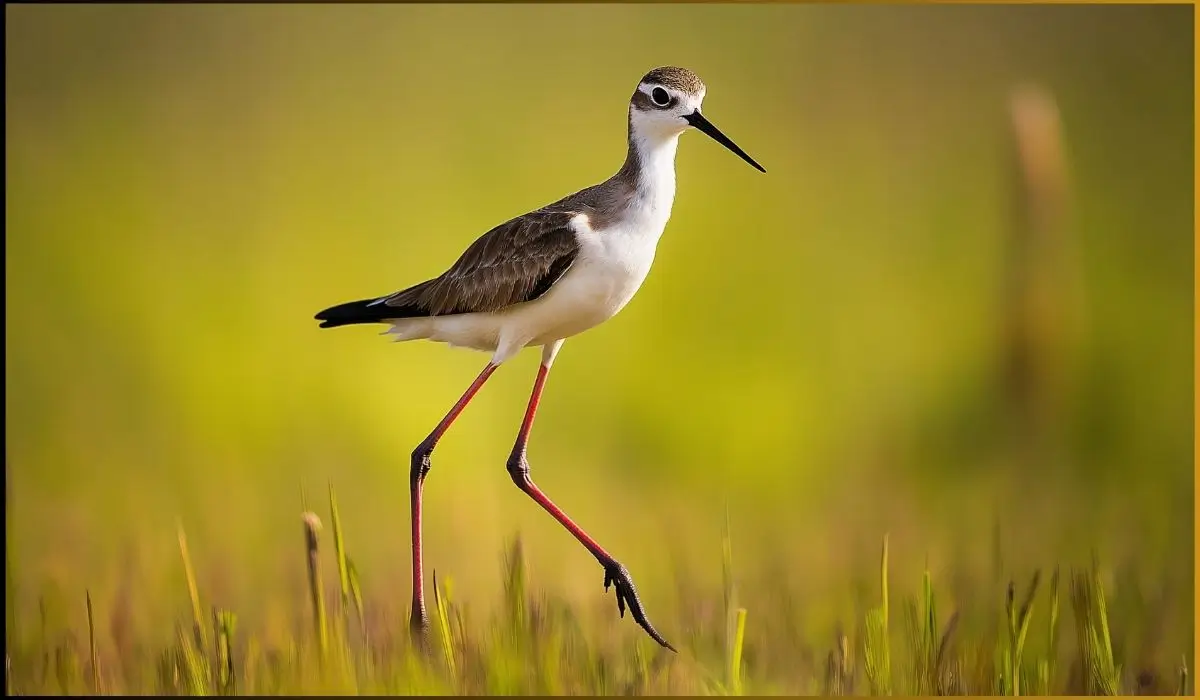
Have you seen small birds with long legs in the water or tall grass? They are interesting birds that fit well in their homes.
Long legs help them find food in shallow water or move fast in dense plants.
These birds live in many places like North and South America, Europe, Asia, and Africa. Some live in shallow water, while others like drier places.
This article will look at 7 small birds with long legs. We will learn about their special features.
The Marvels of Avian Adaptation
Before we dive into our featured species, let’s explore their long legs.
- Wading ability: Their long legs allow them to wade through shallow waters and mudflats.
- Improved vision: Their height gives them a better view of prey and predators.
- Thermoregulation: Extended legs help regulate body temperature in warm, shallow waters.
Small Birds with Long Legs
The American Avocet, Black-winged Stilt, Greater Yellowlegs, Little Blue Heron, Common Greenshank, Spotted Sandpiper, and Wilson’s Phalarope are well-known birds with long legs.
1. American Avocet
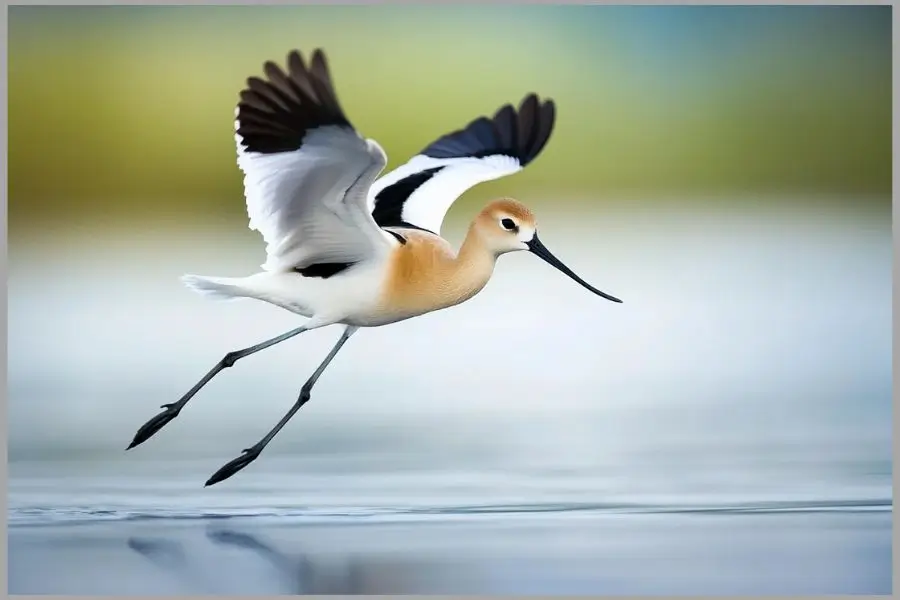
The American Avocets have long legs, thin bills, and bluish-grey legs.
They live in shallow wetlands, salt ponds, and mudflats. They eat insects, small crustaceans, and other small creatures.
They find food by poking around in the mud and shallow water with their bill.
Key Features:
- Length: 16–20 inches
- Leg color: Bluish-gray
- Habitat: Shallow wetlands, salt ponds, and mudflats
American Avocets are social birds that live in large flocks. During breeding, they stay in pairs and build nests on the ground.
Both parents take turns sitting on the eggs and caring for the babies.
Although the American Avocet is not currently endangered, their habitats can be harmed by people.
How to Spot: Look for their elegant shape and side-to-side bill motion as they forage in shallow water.
Related: Top 7 Small Birds with Long Beaks
2. Black-winged Stilt
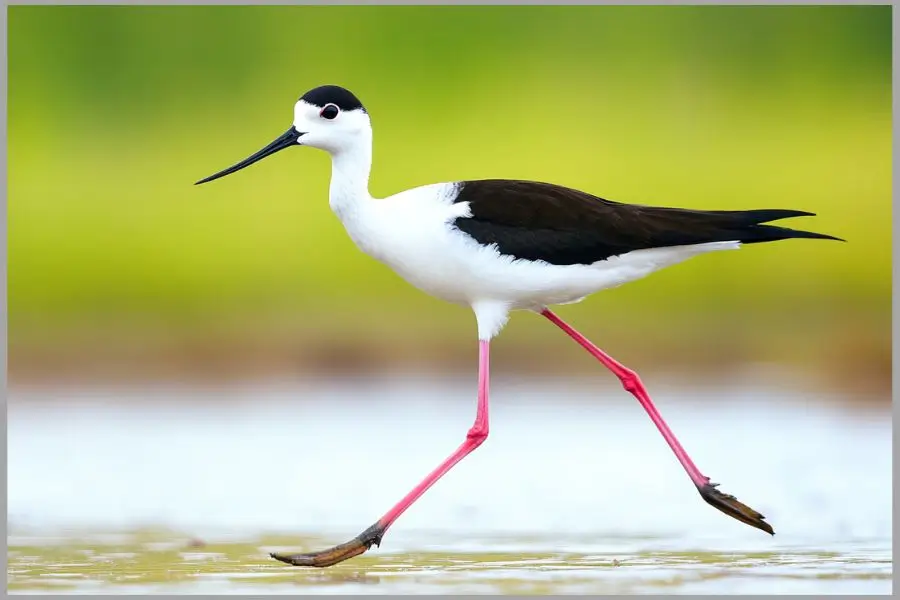
The Black-winged Stilts are small birds with long legs found in Europe, Asia, and Africa. They have long, thin pink legs and a long, thin black bill.
They have black and white feathers, a long, slender neck, and a black crown. They live in shallow, freshwater wetlands and mudflats.
They eat small aquatic invertebrates and insects, catching them with their long, thin bills.
Key Features:
- Length: 13-15 inches
- Leg color: Pink
- Habitat: Shallow freshwater wetlands and mudflats
How to Spot: Look for their black and white plumage and thin, pink legs as they wade in shallow waters.
Discover more about the Black-winged Stilt on eBird.
Related: Top 7 Small Birds with Long Necks
3. Greater Yellowlegs
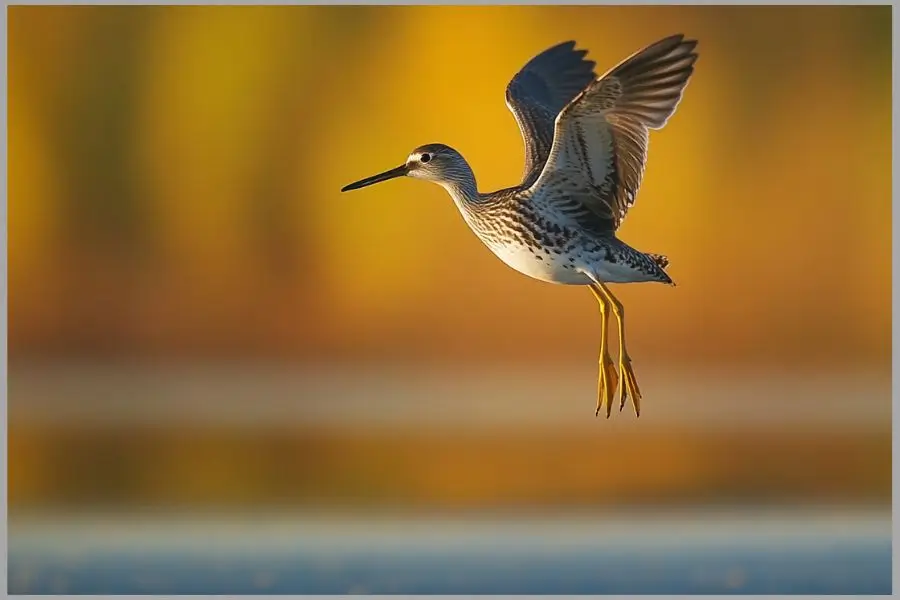
The Greater Yellowlegs are small birds with long legs found in North America.
They have long, bright yellow legs and a long, thin bill. Their feathers are mottled brown and white, with a distinctive white tail.
Greater Yellowlegs eat insects, small fish, and crustaceans. They are often seen foraging in shallow water.
Key Features:
- Length: 11–13 inches
- Leg color: Bright yellow
- Habitat: Various wetlands, including marshes, mudflats, and pond edges.
How to Spot: Listen for their loud, piercing “tew-tew-tew” call, often given in flight.
Explore the Greater Yellowlegs at Audubon
Related: Top 7 Small Birds with Long Wings
4. Little Blue Heron

The Little Blue Herons are small birds with long legs found in the southeastern United States and the Caribbean.
They have long, thin legs and a long, curved bill. Their feathers are mostly blue-grey, with a maroon head and neck during breeding.
Little Blue Herons eat small fish, frogs, and crustaceans. They catch them with their sharp bills.
Key Features:
- Length: 22–29 inches
- Leg color: Greenish-yellow to grayish.
- Habitat: Coastal marshes, swamps, and inland wetlands
How to Spot: Look for a slender, dark blue bird with a purplish-maroon neck during the breeding season.
Read about the Little Blue Heron on All About Birds.
5. Common Greenshank
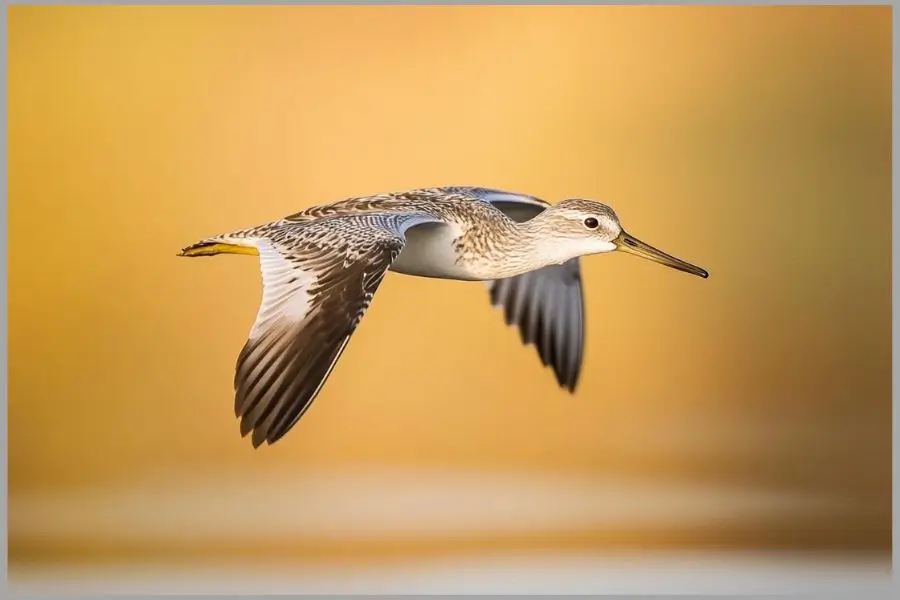
Common Greenshanks are small birds with long legs. They live in Europe, Asia, and Africa. They have long, greenish-gray legs and a long, thin bill.
Their feathers are mottled grey and white. They have a special white wedge on their back.
They have long, greenish legs and a white wedge on their back.
They eat small fish, insects, and crustaceans. They are often seen in shallow water.
Key Features:
- Length: 12–14 inches
- Leg color: Olive green
- Habitat: Coastal mudflats, inland marshes, and lake shores
How to Spot: Their bill is slightly upturned. They have a loud “teu-teu-teu” call.
Learn about the common greenshank on rspb
6. Spotted Sandpiper

The Spotted Sandpiper lives in North and South America. It has long, bright yellow legs and a short, straight bill.
Its feathers are brown and white. It has spots on its breast during the breeding season.
They eat small insects, crustaceans, and mollusks. They are known for their teetering gait.
Key Features:
- Length: 7-8 inches
- Leg Color: Yellowish to orange
- Habitat: Shorelines of ponds, rivers, and lakes
How to Spot: Look for their teetering walk. Listen for their sharp “peet-weet” call.
Discover more about the Spotted Sandpiper on Audubon
7. Wilson’s Phalarope
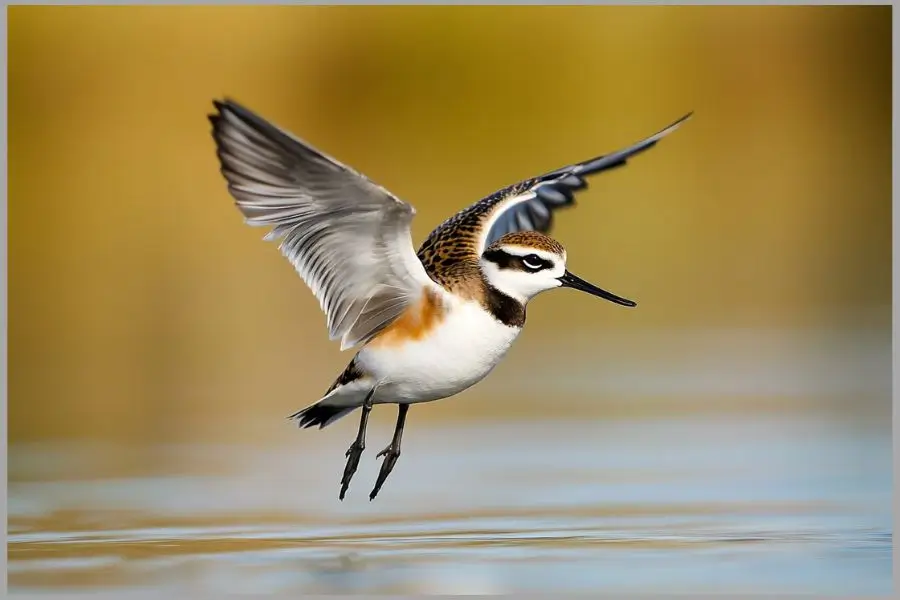
Wilson’s Phalaropes are small birds with long legs. They live in North and South America. It has long, thin legs and a short, straight bill.
The female is more brightly colored than the male. She has a reddish head and neck and a black patch on her back.
They feed on small crustaceans and insects. They catch them by swimming in circles in shallow water.
Key Features:
- Length: 8-10 inches
- Leg color: Black
- Habitat: Shallow wetlands and saline lakes
How to Spot: Look for their rapid spinning behavior while feeding in shallow water.
Explore Wilson’s Phalarope on All About Birds
Conservation and Climate Change
Many of these long-legged waders face threats from habitat loss and climate change.
As wetlands vanish due to human activity and climate change, these birds must adapt or move.
The IUCN Red List states that most of these species are of Least Concern.
But we must check their populations with great attention.
Wetland preservation and restoration are vital for its survival. So we must focus on conserving them.
Conclusion:
Small birds with long legs are fascinating. They bring beauty and diversity to the avian world. Each species has unique features.
They are agile and flexible in their environments. They wade in shallow water or forage in dry areas.
Whether you’re a bird watcher or love nature, appreciating these birds is rewarding.
By learning more about them, we understand the web of life better. So, next time you see one, pause and enjoy their beauty. You might discover something new!
Happy birdwatching!
For the latest on bird sightings and ranges, visit eBird. It’s a global database of bird observations by citizens and scientists.


